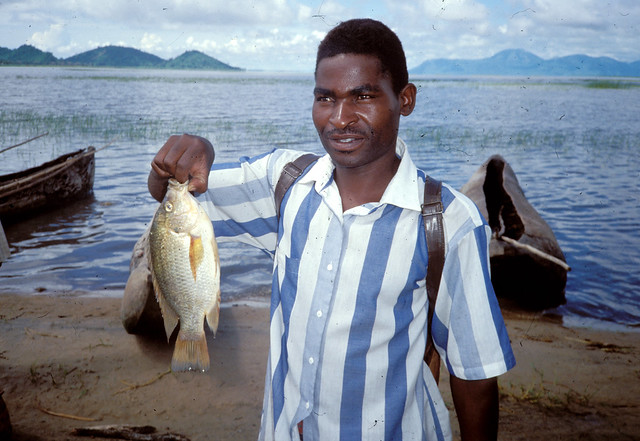Photovoice was the focus of a special workshop at the FISH-sponsored 7th Gender in Aquaculture and Fisheries conference in Bangkok on 18-21 October 2018.
The workshop – ‘Photovoice: Researching gender in aquaculture and fisheries though the camera lens’ – was run by Dr. Janine Pierce, an adjunct research fellow at the University of South Australia.
“Photovoice is an increasingly used research method that gives participants cameras to take photos on loosely worded themes and, usually, to write accompanying comments in a diary. It is explained as a feminist research method, as it is empowering and respectful, giving the chance to participants, often women, who may not have had a voice previously to tell their story.”
In her workshop, Dr. Pierce outlined the photovoice process, gave examples of photovoice projects and described the different steps in the research process. Findings of photovoice projects are usually presented in exhibitions, to inform decision-makers of outcomes of projects or to highlight issues needing to be addressed.
Catalyzing change
The use of a more participatory approach to fisheries research has largely arisen from a move towards interactive governance and participation in fisheries management, as well as recognition of the importance of collaborative learning in small-scale fisheries.
“At its heart, photovoice seeks to make community needs more visible and to empower participants to push for change at the individual, community and policy levels,” says Dr. Fiona Simmance, a small-scale fisheries scientist at WorldFish, who attended the conference and used the research method in the small-scale inland capture fishery of Lake Chilwa, Malawi.
“As a participatory method, photovoice offers considerable promise for capturing the unique perspectives of vulnerable, uneducated and marginalized populations, such as women in fisheries, because of its flexibility in design and use of photography as a means of language – sometimes a barrier in standard social methods such as questionnaire surveys. Throughout the process, participants have control over what they document, what conclusions to report and how to catalyze change in their communities.”
Dr. Simmance used photovoice to capture the perceptions of men and women fishers regarding their fish-related activities, benefits obtained and challenges experienced. A modified version of the assessment was produced to improve the understanding of gender in the sector, and included a one-to-one interview with participants to develop narratives around photographs.
The method produced rich data on the value of the sector for food and nutrition security and reduced vulnerability. Fishers highly valued their fish-related activities and outlined that through fish-related income they were able to meet their household food needs and diversify livelihoods.
In addition, through discussions on prioritization of challenges, fishers identified climate variability and the associated impacts of low fish availability. The method captured the complexity of context-specific factors and produced policy-relevant results that highlight the hidden value and challenges in small-scale inland capture fisheries and help make the role of women more visible.
With the increased interest in previously overlooked aspects of gender in small-scale fisheries and aquaculture research, such results could not be more timely.





